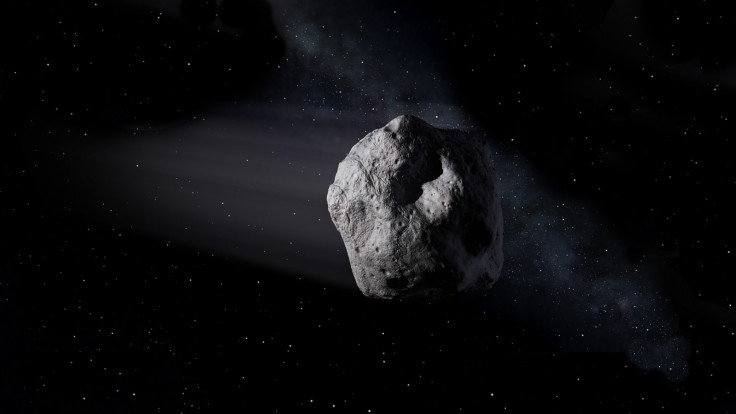NASA's Hubble captures rare asteroid that could be worth $10,000 quadrillion
16 Psyche is believed to be one of the largest asteroids in the main asteroid belt and NASA will arrive at it in 2026.
The asteroid 16 Psyche is one of the most intriguing objects floating in our solar system. The rare metallic asteroid is valued at $10,000 quadrillion or $10,000,000,000,000,000,000, and a new study gives us a closer look at it.
16 Psyche was first discovered by the Italian astronomer Annibale de Gasparis on March 17, 1852 from Naples. It is one of the largest asteroids spotted in the main asteroid belt and orbits around Mars and Jupiter. Its average diameter is about 140 miles, which is about the distance between Los Angeles and San Diego, according to NASA.
This rarity is the primary target of NASA's Psyche mission which will be launched in August of 2022. The spacecraft is expected to arrive on the asteroid that is said to be worth 70,000 times more than our global economy, in early 2026.
A new study authored by Southwest Research Institute planetary scientist Dr. Tracy Becker reveals several new details about the asteroid. Becker's study used NASA's Hubble Space Telescope to observe 16 Psyche at two specific points in its rotation which unveiled both sides of the asteroid. The observations were made at ultraviolet wavelengths.
Psyche takes about five Earth years to complete one orbit around the Sun but only four hours to complete a rotation on its axis. Several studies have suggested that the celestial giant is a dense and largely metallic body, unlike its counterparts which are made of rock and ice.
"We've seen meteorites that are mostly metal, but Psyche could be unique in that it might be an asteroid that is totally made of iron and nickel," Becker said in the press release. "Earth has a metal core, a mantle and crust. It's possible that as a Psyche protoplanet was forming, it was struck by another object in our solar system and lost its mantle and crust."
What makes Psyche so important is its metal structure which is rare in our solar system. It is believed to be "the building blocks of the solar system" and offers to present a unique outlook.
"To understand what really makes up a planet and to potentially see the inside of a planet is fascinating. Once we get to Psyche, we're really going to understand if that's the case, even if it doesn't turn out as we expect. Any time there's a surprise, it's always exciting," Becker added.
Becker notes that it was for the first time that they were able to identify what they believe to be "iron oxide ultraviolet absorption bands." The author of the study states that the asteroid's surface could be made up of iron but it cannot be said with certainty because even a small amount of iron can impact UV observations. However, "the asteroid appeared increasingly reflective at deeper UV wavelengths."
She insists on further investigation for a better understanding of this unique astronomical object.
The Psyche mission is a unique mission exploring metallic surfaces in our solar system for the first time. The mission to 16 Psyche will be led by Arizona State University and managed by NASA's Jet Propulsion Laboratory.

© Copyright IBTimes 2025. All rights reserved.





















